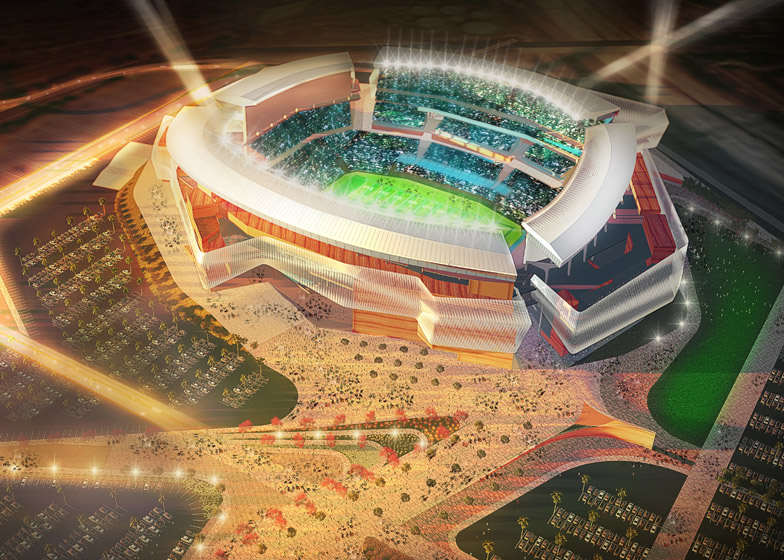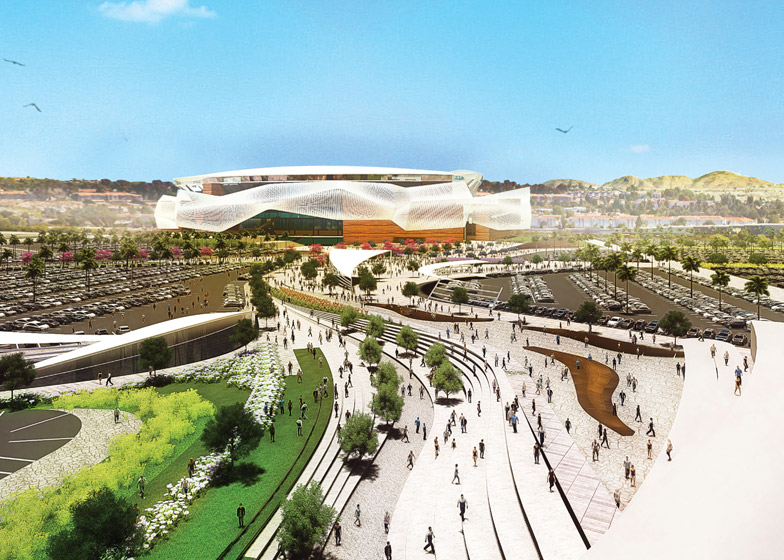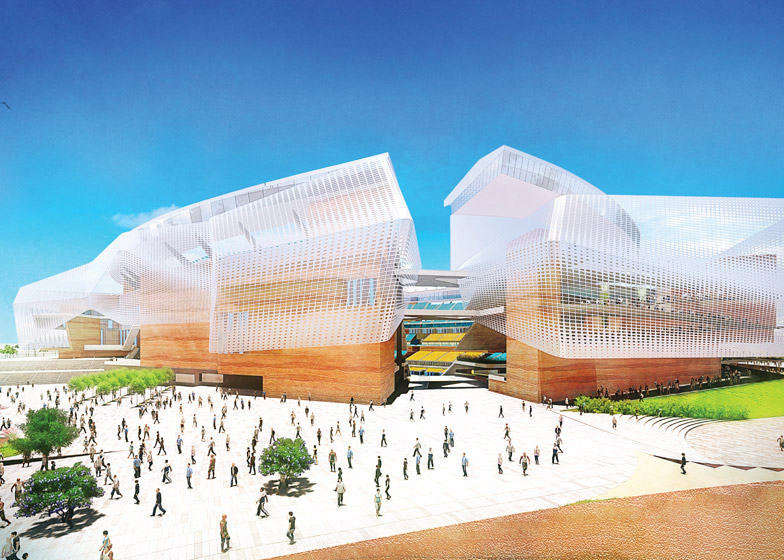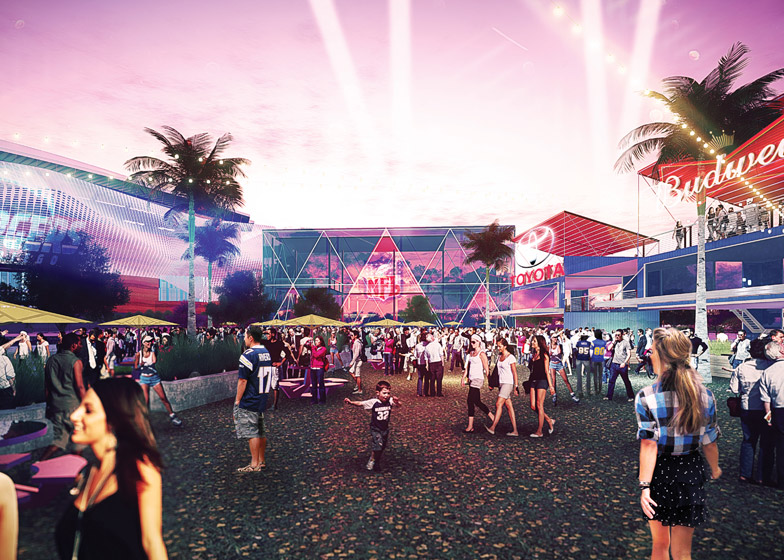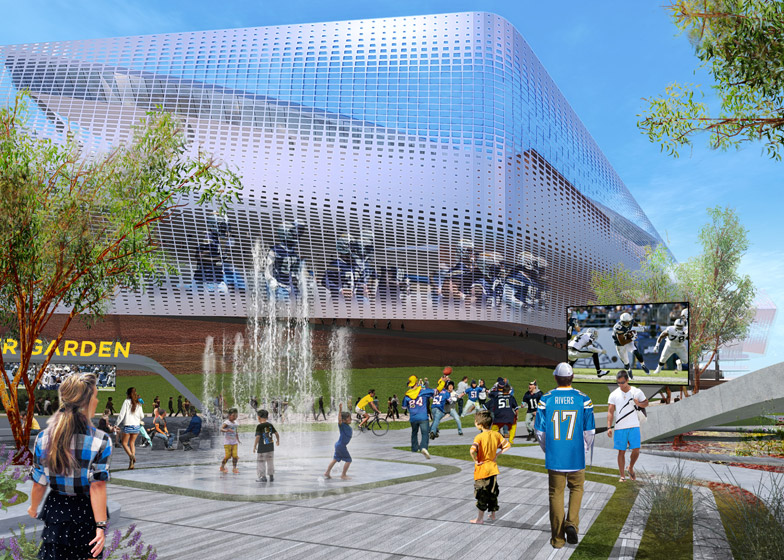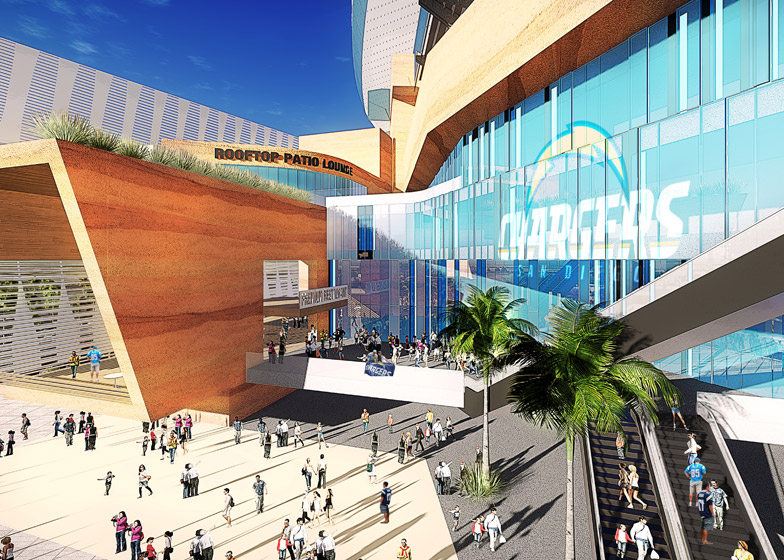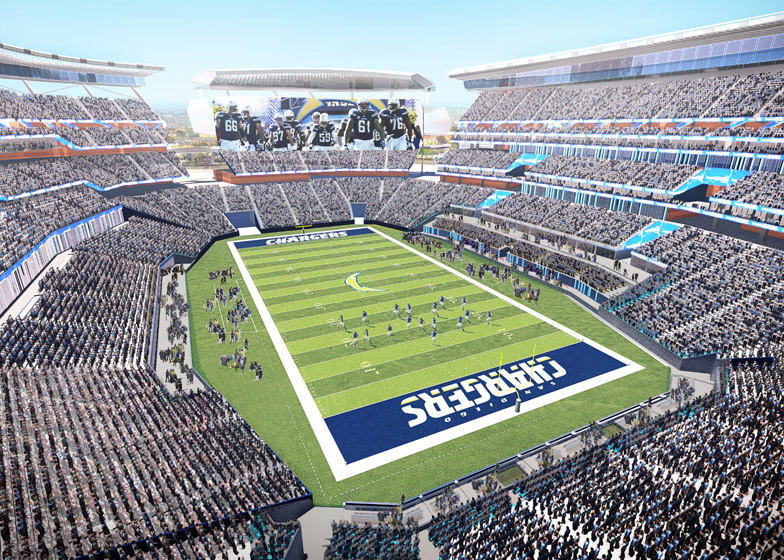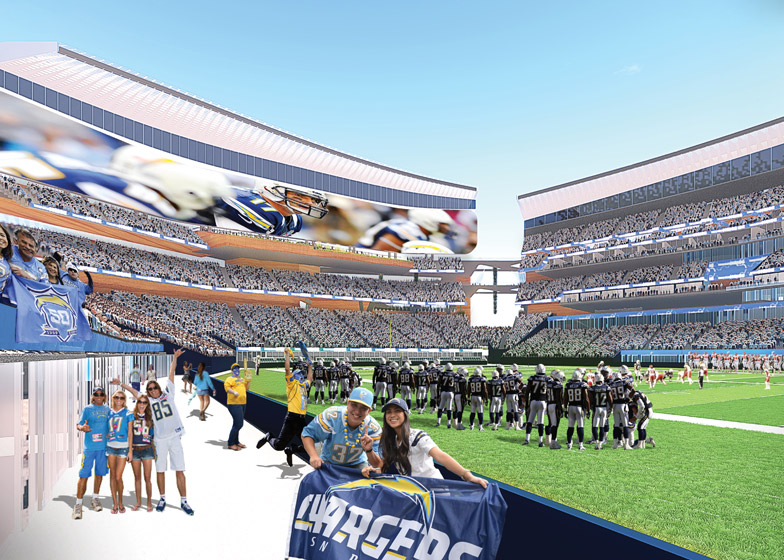This concept by architecture studio Populous for a new stadium in San Diego, California, features a sculptural facade clad in a kinetic screen that moves with the wind (+ slideshow).
City officials have released the preliminary scheme for the controversial 68,000-seat sports arena – a design commissioned just six weeks ago.
Under the current financing proposal for the stadium, taxpayers are expected to foot roughly a third of the bill, which they will vote on during an upcoming election.
If the project receives funding and all necessary approvals, the building will become the new home of the San Diego Chargers, a professional American football team.
It will be constructed in the Mission Valley neighbourhood in San Diego, a coastal city known for its sandy beaches and temperate climate.
"Our inspiration comes from celebrating San Diego as a city of villages," said Jon Knight, senior principal at Populous, in a statement.
"It incorporates San Diego's ocean and harbour experience, proud Naval and Marine heritage, and the dynamic look and feel of the ocean's waves."
Renderings show an asymmetrical facade with tan-coloured walls partially covered in a sculptural screen.
Described as a "kinetic skin," the screen is made up of metal plates hinged along their top edge and is designed to flutter when the wind blows – a reference to the movement of the ocean. Cuts in the facade will enable views to the surrounding area.
Inside, the layout features a series of common spaces – some open, others enclosed – that will encircle the open-air playing field.
The stadium will include large locker rooms, a corporate hospitality suite, a VIP clubhouse and a hall of fame gallery. The design also features sideline and end zone "suites" where spectators can watch the game at ground level.
Populous plans to incorporate elements that conserve water and reduce energy use.
Landscaped avenues will lead toward the building's various entrances. The scheme also calls for a skate park and a new trolley station, which will "reduce congestion for fans arriving by mass transit and lead people to and from the stadium in an efficient, pleasant arrangement," according to reports.
Beyond professional football games, the stadium would be used for concerts, civic events and other types of sporting matches.
The facility would replace San Diego's Qualcomm Stadium, which opened in 1967 and was designed by local firm Frank L Hope and Associates. The old stadium is slated to be demolished once the new facility opens in 2019.
"A new stadium means new opportunities," said San Diego's mayor, Kevin L Faulconer. "This is an opportunity to replace an ageing facility with a world-class sports and entertainment complex that's an asset to our community."
The $1.1 billion (£705 million) project faces several hurdles. Under the current financing proposal, taxpayers are expected to contribute $350 million (£224 million), with the remaining costs picked up by the Chargers and the National Football League (NFL).
The owner of the Chargers, who is considering moving the team to Los Angeles, "trashed" the recent proposal, according to the Associated Press. Taxpayers will either support or vote down the public funding portion of the scheme during a special election scheduled for January.
Kansas-based Populous has offices worldwide and has designed a number of arenas for teams in the NFL and Major League Soccer, as well as stadiums for the 2012 Olympic Games in London and for the 2014 FIFA World Cup.
Other recent sports projects that have evoked controversy include Zaha Hadid's scrapped plan for the Tokyo 2020 Olympics stadium.

